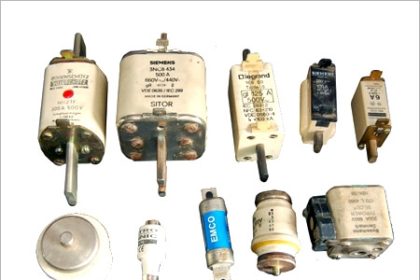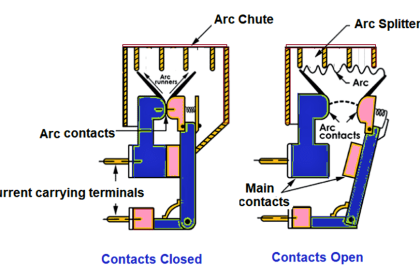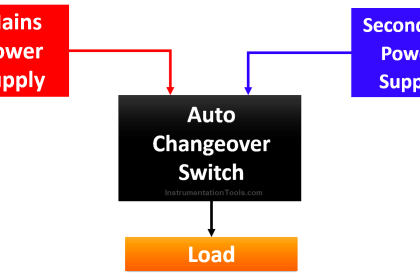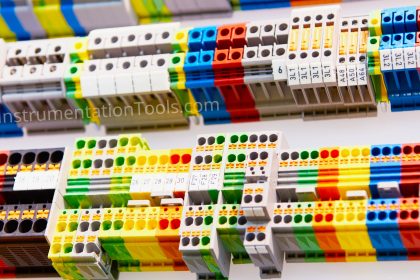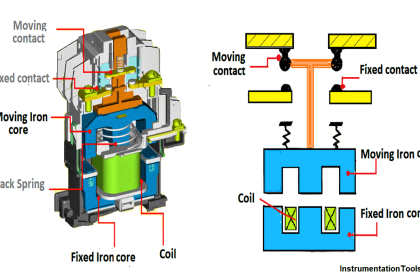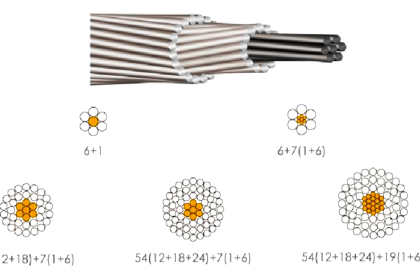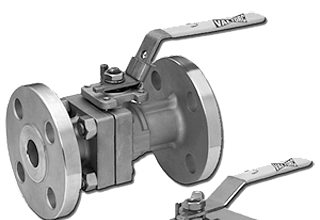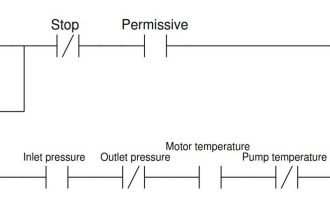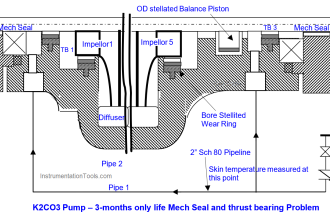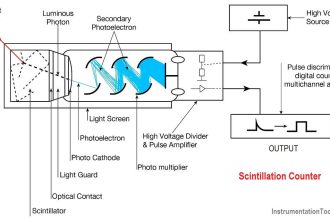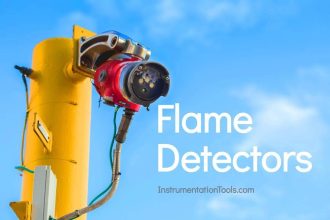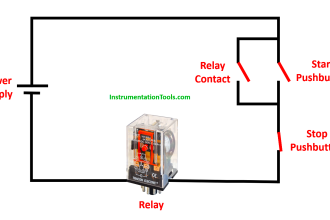VCB stands for vacuum circuit breaker. This type of circuit breaker uses vacuum media for quenching the arc.
In VCB vacuum is used because the dielectric strength of the vacuum is far better than any type of medium.
The vacuum is the superior dielectric medium of extinct using the arc compared to other mediums.
A vacuum circuit breaker is used for switching as well as protection of the connected equipment, so they have to be very fast-acting to ensure that during any fault the breaker automatically trips before the fault current can cause damage to the equipment. So these breakers are essential at incomers and interconnectors in a network.
Principle
When the contacts of the breaker are opened in a vacuum, an arc is generated by the ionization between the gap area of contacts by the metal vapors of contacts.
The vacuum in the chamber is typically maintained in the order of range from 10-7 to 10-5 torr. Due to the vacuum, the recovery of dielectric strength takes place and the arc due to metal vapors get extinguished.

Construction
It consists of three contacts.
- Fixed contact
- Moving contact
- Arc shield inside the vacuum chamber.
The moving member is connected to the control mechanism by Stainless steel bellows.
The stainless steel bellows enable the permanent sealing of the vacuum chamber so as to avoid the likelihood of leakages.
Ceramic envelop is used as the outer insulating body.
The spring mechanism is connected to the lower bottom of the breaker to move the metallic bellows.
Working

At normal conditions, both contacts remain closed to each other.
When the fault occurs, the breaker operates the moving contacts separates from the fixed contacts and an arc is generated between the contacts.
The arc generation is due to the ionization of metal ions and depends very much upon the material of contacts.
The vapor density depends on the current in the arc generated between the contacts.
When current decreases, the rate of vapor release decreases, and after that current becomes zero, the medium regains its dielectric strength if vapor density is reduced.
When the current to be interrupted is very small in a vacuum, the arc split into several parallel paths.
The total current is divided into several parallel arcs between the gap of two contacts. The arcs generated in this process repel each other and spread over the contact surface.
At high current values, the arc gets concentrated on a small region. It causes rapid vaporization of the contact surface.
This disruption of the arc is possible if the arc remains in the diffused state. If it is quickly removed from the contact surface, the arc will be restricted.
Advantages
- Reliable, have longer service life than other types of circuit breakers.
- They are compact in size.
- There is no chance of fire hazard.
- The vacuum has high dielectric strength.
- No generation of gas after the operation.
- Silent and less vibrational operation.
- It is much environmentally friendly than the SF6 Circuit breaker.
- Can interrupt any fault current.
- Replacement of vacuum interrupter is much convenient.
Disadvantages
- Vacuum circuit breakers are uneconomical above 36 kV.
- The high technology used in the generation of vacuum.
Applications
The vacuum circuit breaker is used to disconnect power in the medium voltage range from 11 kV to 33 kV.
Source: VACUUM SWITCHGEAR BY Allan Greenwood
Read Next:
